Physical Address
304 North Cardinal St.
Dorchester Center, MA 02124
The endoscopic endonasal approach for reconstruction of spontaneous anterior skull base defects provides a minimally invasive and equally effective outcome compared with open approaches. , Using endoscopic magnification, small defects or leaks can be identified and appropriately repaired while avoiding the morbidity associated with traditional skull base reconstruction using an open craniotomy approach. Additionally, intraoperative and postoperative adjunctive measures such as lumbar drainage and acetazolamide therapy remain an option in the management of spontaneous patients with CSF leak. , This surgical guide aims to discuss the relevant anatomy of the cribriform plate, technical surgical aspects of skull base reconstruction in this region, and considerations for postoperative management.
The cribriform plate of the ethmoid bone forms the roof of the nasal cavity and represents the lowest portion of the anterior midline skull base ( Fig. 21.1 ). The olfactory fossa (OF), which are deep depressions within this bone, support the olfactory bulbs from which small neurophilia extend into the nasal cavity through small pores in the bone called olfactory foramina. The OF is bordered medially by the crista galli and laterally by the lateral cribriform lamella. The cribriform plate is thin and thus susceptible to iatrogenic fracture during routine sinus surgery, especially along the lateral lamella. The thickness of the lateral lamella is between 0.05 and 0.2 mm.
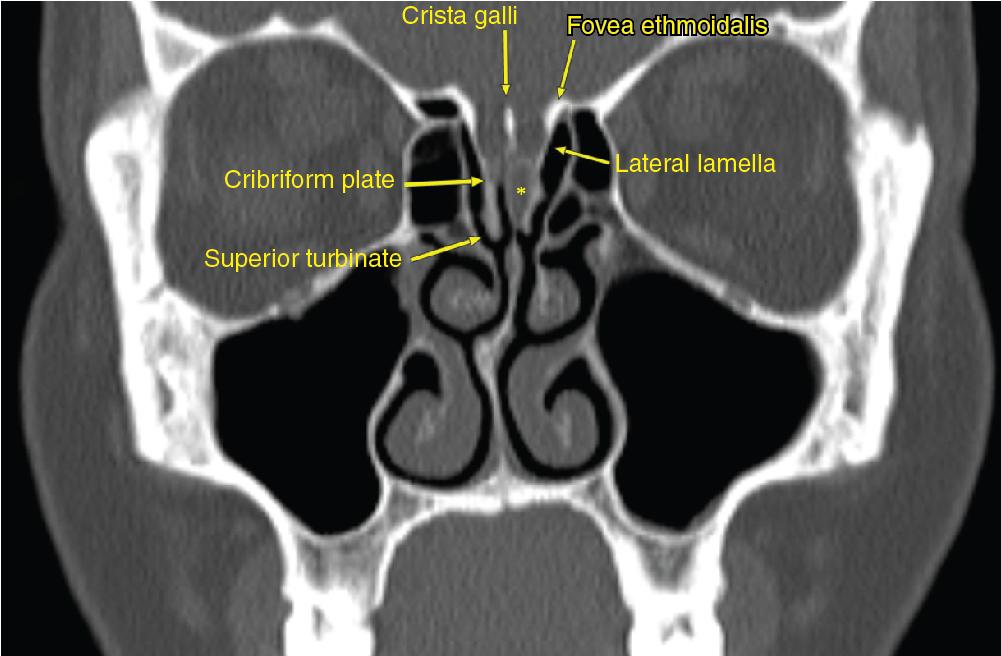
The depth of the OF in relation to the ethmoid roof is variable and famously classified by Keros in 1962 ( Figs. 21.2 to 21.4 ). Keros type 3 is the least common but has the largest risk of iatrogenic injury during endoscopic sinus surgery.
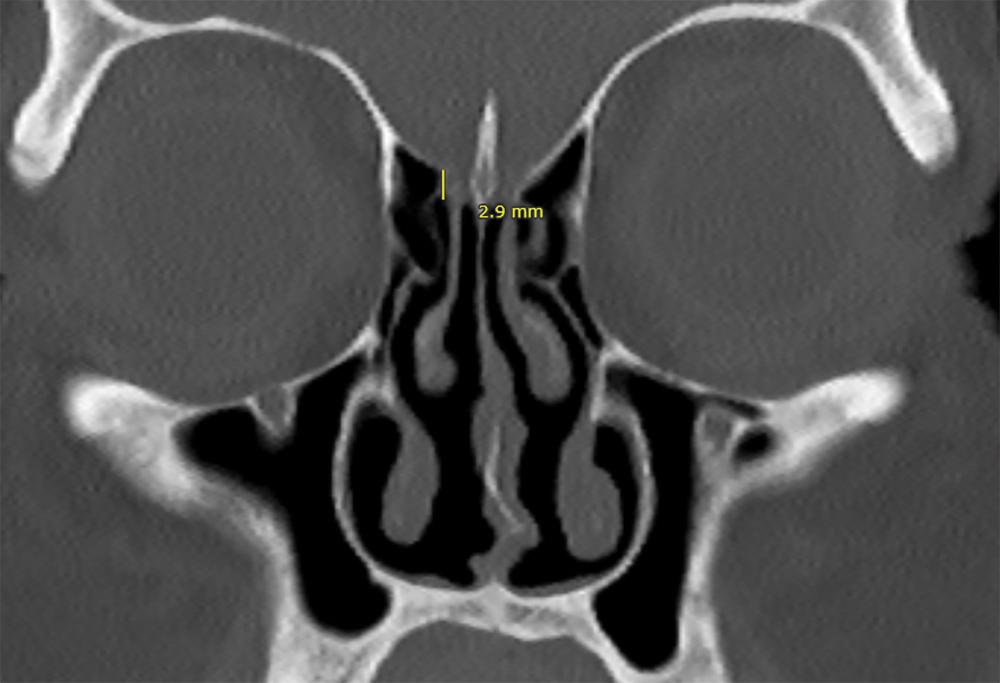
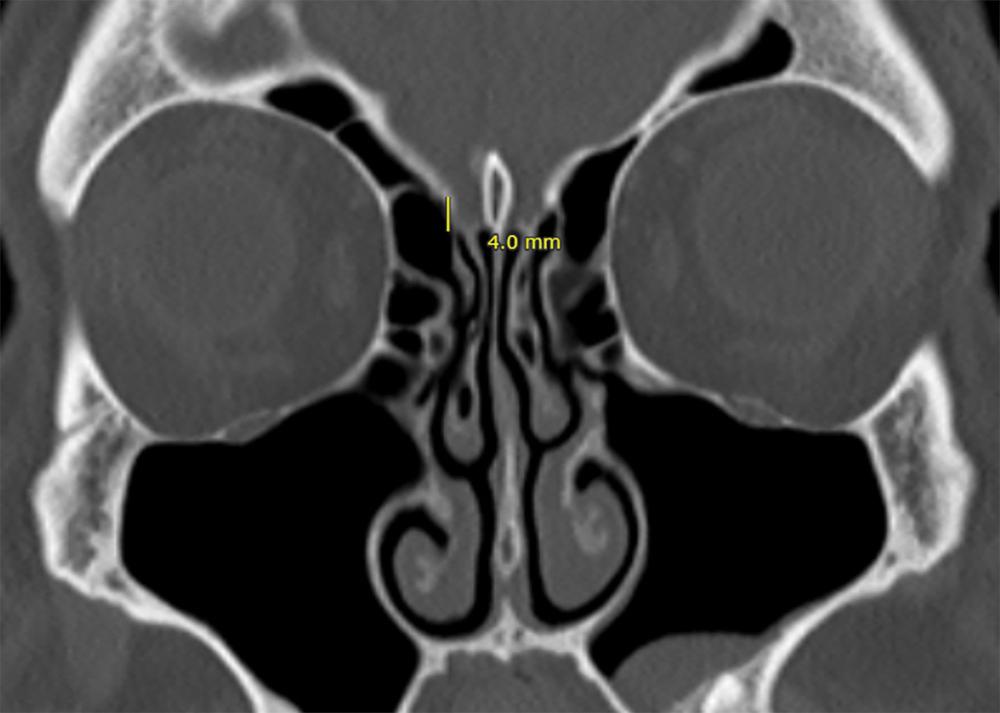
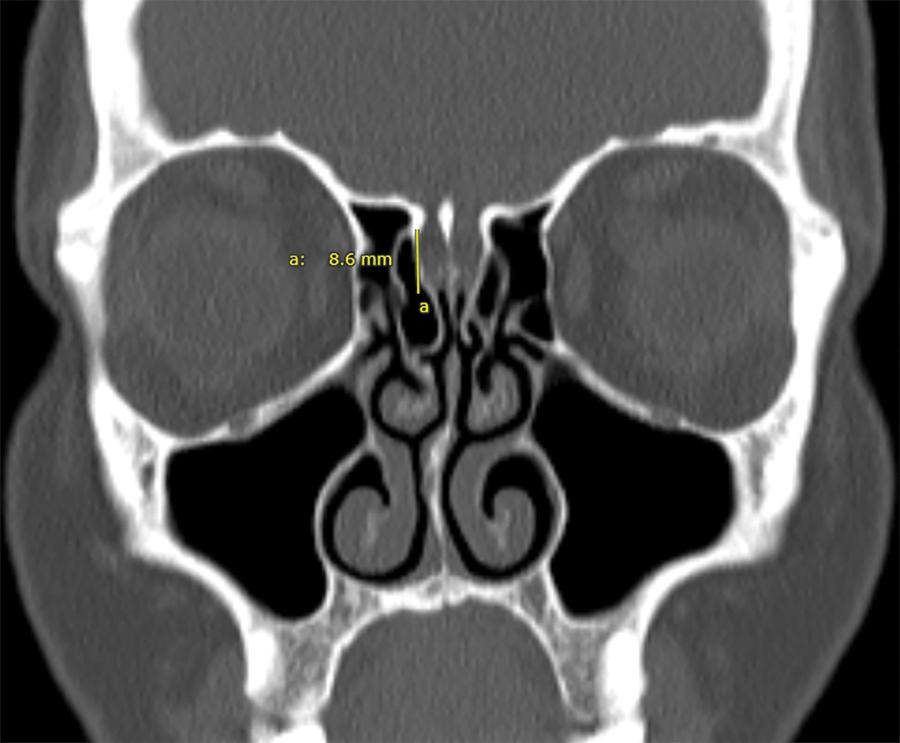
The anterior ethmoidal artery represents a key anatomic structure that is intimately related to the cribriform plate. The anterior ethmoid artery is an extension of the ophthalmic artery located in the orbit that extends through the anterior ethmoidal foramen along with the anterior ethmoidal nerve. This neurovascular bundle courses either along the roof of the ethmoid or lies dehiscent below the skull base, commonly caused by pneumatization of a supraorbital ethmoid cell. The artery then enters the anterior cranial fossa to supply the dura and extends into the nasal cavity to supply Kiesselbach’s plexus. The artery is at much greater iatrogenic risk if located below the skull base, and severing it can lead to retrobulbar hematoma, necessitating further procedures for bleeding control and orbital decompression to prevent visual impairment. The position of the artery is easily identifiable on coronal computed tomography (CT) imaging by a medial peaked notch coming from the orbit. This finding is colloquially described as the “nipple or pyramidal sign” ( Fig. 21.5 ).
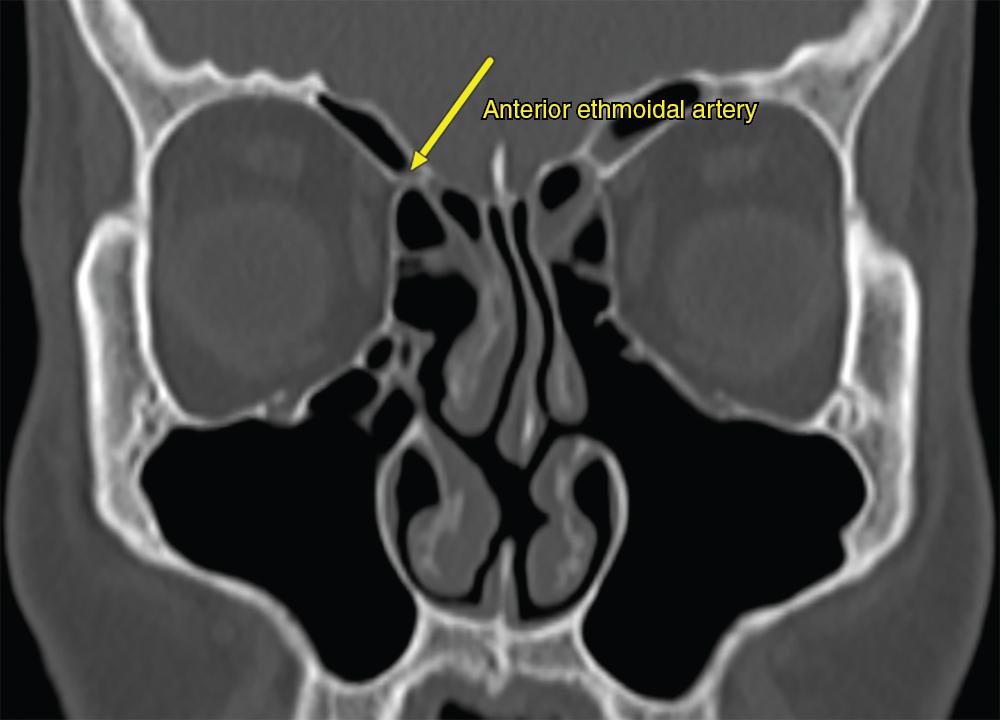
Become a Clinical Tree membership for Full access and enjoy Unlimited articles
If you are a member. Log in here